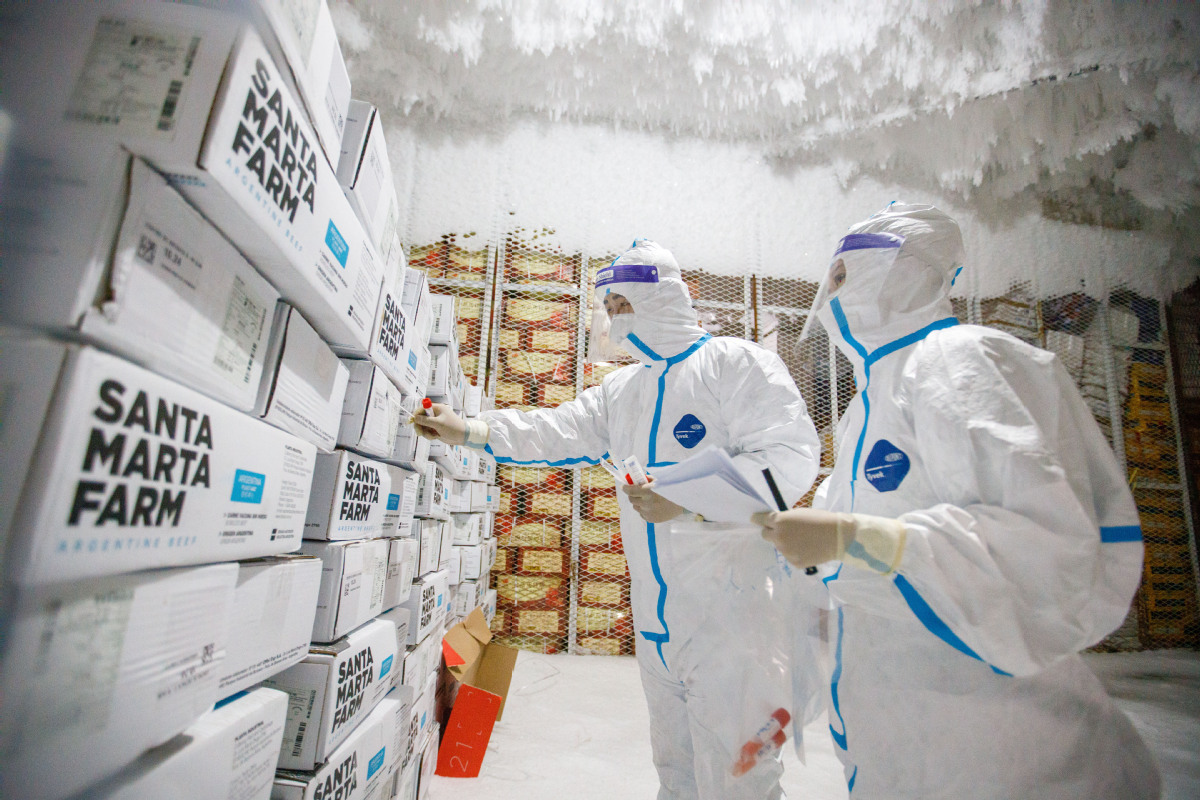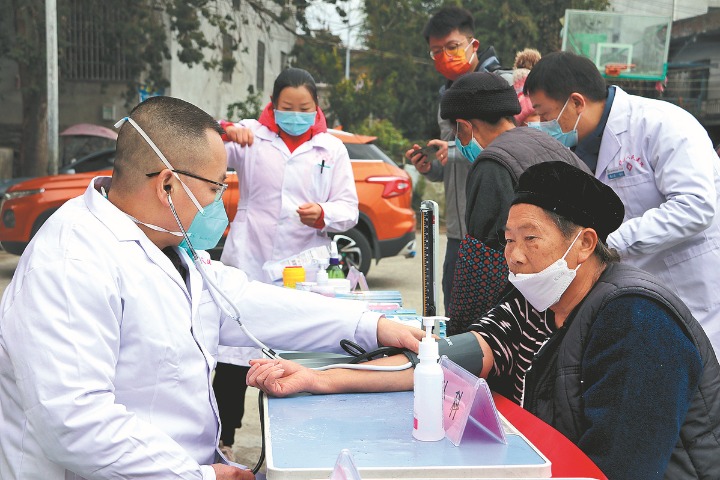First Wuhan cluster likely due to imports

Early traces of virus found overseas in areas involved in cold chain shipments
The cluster of COVID-19 infections at a seafood market in Wuhan, Hubei province, in late 2019 was likely triggered by cold chain imports contaminated by the novel coronavirus, researchers from the Chinese Center for Disease Control and Prevention said.
They found that dozens of foreign regions that had shipped cold food products to Wuhan, including the Huanan seafood market, overlapped with areas that reported very early traces of the virus, adding that more extensive testing is needed to establish a definitive association between the early circulation of the virus overseas and its entry into the market.
The Huanan seafood market was put under a spotlight during the search for the origins of the virus because some of the earliest infections detected in Wuhan in December 2019 were linked to the market.
However, as evidence supporting the virus' long-distance transmission via contaminated cold chain products grows, the hypothesis that the cluster of infections at the market in Wuhan was sparked by cold food imports has begun to take shape, said Ma Huilai, deputy head of the China CDC's center of postgraduate education and training.
Liu Jun, a professor at the China CDC's National Institute for Viral Disease Control and Prevention, said that more than half of the nearly 680 vendors at the Huanan seafood market were involved in the cold chain trade, and they handled imports from 20 foreign countries or regions, covering 29 different food categories.
Across Wuhan, cold chain products from 37 countries or regions arrived in the city from September to December 2019, he added, citing results of a review conducted by Chinese and international experts during a mission convened by the World Health Organization earlier this year.
"These suppliers were scattered in quite a wide geographical area, including Southeast Asia and Europe," Liu said.
Some countries involved in cross-border cold chain trade with Wuhan have found that blood serum samples collected in 2019 tested positive for the virus during retrospective studies, he said.
Positive test results before or around December 2019-when the virus hit Wuhan-are an indicator of the virus' stealthy transmission in regions outside the city.
France, Brazil and the United States have all reported positive results in pre-pandemic blood, throat or sewage samples, Chinese experts told a briefing in late July.
For instance, researchers in Brazil said they had detected genetic materials of the virus in local waste water collected in November 2019. In France, a throat sample taken from a patient who coughed up blood in late December also came back positive for the virus.
The virus was likely brought into the market from countries that reported animal virus strains highly similar to human infections, experts said.
"Some countries have found that the virus harbored by local horseshoe bats is homologous to the novel coronavirus," Liu said. "These countries also overlapped with countries that export cold chain food to Wuhan."
Horseshoe bat and pangolins, two of the most likely sources of the novel coronavirus, are widely distributed across Southeast Asia, southern China and sub-Saharan Africa, according to a study published by Chinese scientists last month on a preprint server managed by the Chinese Academy of Sciences.
The study said that as an international transportation hub, Wuhan received many flights from Southeast Asian countries where the two animals live.
"Therefore, before the pandemic, Wuhan was already at a high risk of importing SARS-CoV-2 through cold chain cargo from other parts of the world," the study said. Liu was a co-author of the study.
Based on these findings, Liu said that the possibility of the virus' introduction into the market in Wuhan and the wider city via cold chain contamination was valid and merited further investigation.
Chinese researchers have performed many epidemiological and genome sequencing surveys at the market, he said.
They found that confirmed infections were more common among cold chain vendors at the market than other sellers, and the earliest three cases reported at the market all worked with cold food products.
Among the 21 shops that were found to contain positive environmental samples at the market, 16 of them managed cold chain goods, he added.
Liu said a promising approach to clarify the issue would be to cooperate with foreign countries that had supplied cold chain goods to the market, in order to survey, test their cold chain workers and check their hospital visit records.
Please feel free to contact us by sending your questions to question@chinadaily.com.cn or commenting on China Daily app. We will ask experts to answer them.














